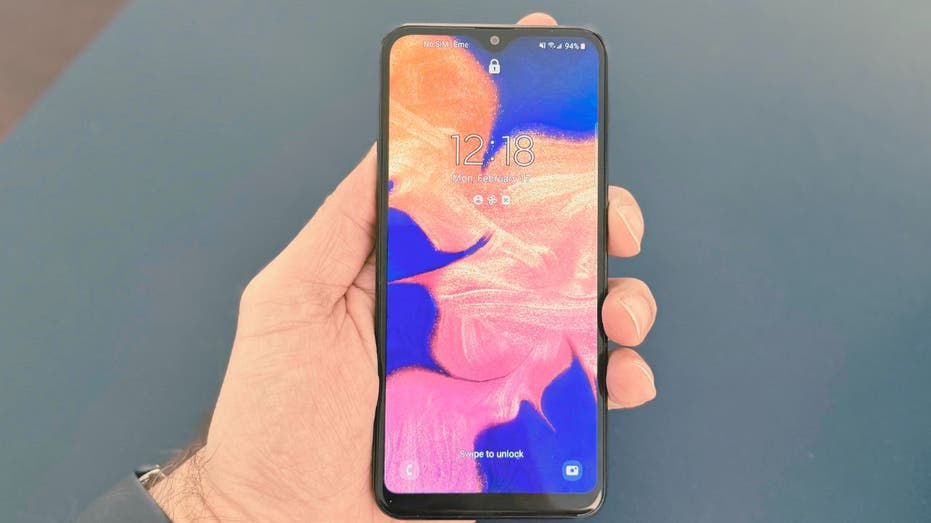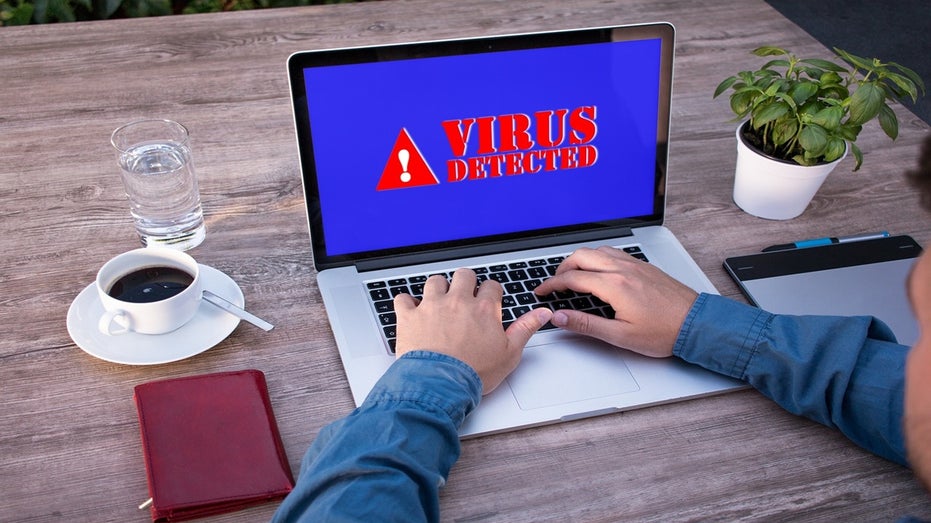- by foxnews
- 06 Apr 2025
8 phishing email scams to watch out for this holiday season
Be on alert this holiday season for phishing emails. Kurt "CyberGuy" Knutsson shares several examples of fake phishing emails he's received in his inbox.
- by foxnews
- 06 Dec 2024
- in technology

These deceptive messages often look like they're from trusted sources such as banks or delivery services, making it easy to fall for their traps.
This phishing email claims to be from Apple and promises you a free iPhone 15 Pro.
It says, "NO CATCH, NO COST, WIN IN MINUTES." It uses the official Apple logo and the word FREE in capital letters to catch your attention. It asks you to confirm your shipping address to receive your prize and says, "Just answer a few questions, WIN a iPhone 15 Pro. It is that simple!"
This scammer tries to fool you by using the words "Temu Confirmation," which sounds like a legitimate email confirming that your package is on its way. They urge you to click on the link that says, "Please Confirm Receipt," implying that you need to do so to receive your package.
They also add a deceptive message that says, "If you cannot see the images below, Click show images," highlighted in red. This is another way to trick you into clicking on the link.
Moreover, they use a sneaky tactic of labeling the message as "This message is from a trusted sender" and highlighting it in green, as if to reassure you that it is safe and authentic.
This email is a fake one that tries to imitate the Chinese shopping platform Temu.
It uses the phrase "YOUR OPINION IS IMPORTANT!" in capital letters to get your attention. It then offers you a tempting reward: "a pallet of products from TEMU" with a picture to make it look real. It asks you to take a short survey to claim your reward by clicking on the big orange button that says "CLICK HERE" in capital letters. Don't do it!
The scam email pretending to be from Target wants you to believe that you are a lucky winner.
It uses the words "GIVEAWAY ENTRY WINNER" in large and bold capital letters. It also puts "Final notice" in the subject header, giving you a sense of urgency. The email asks you to take a short survey about your Black Friday shopping experience to claim your prize and wants you to click on the GET STARTED button. Don't do it.
As you'll see in the "Delivery" messages below, the scammers are getting clever by sending a series of emails to make you think that you have a real package on its way to you, and/or you keep missing the delivery of this package. The emails say things like "We tried delivering your package," "Uncompleted Dispatch," "Third attempt," "Delivery unsuccessful" and "Your order will be canceled in the next 24 hours."
These emails are designed to create a sense of urgency and pressure you into clicking on the links that they provide. They want you to think that this company is really trying to reach you, so it must be real. But it's a scam! However, these links are not from legitimate delivery companies but from scammers who want to steal your information or infect your device. If you are expecting a package, check the tracking number and the sender's address carefully. Do not click on any links or attachments that you do not recognize.
This email claims to be from UPS, but it is actually a scam. It uses the UPS logo and colors to look authentic and is designed to trick you into clicking on malicious links. It starts with the alarming phrase "Delivery Unsuccessful" and tells you that you have one package waiting for delivery.
It then asks you to confirm your shipping details by clicking on either the "CONTINUE" or the "SCHEDULE YOUR DELIVERY" buttons, both in capital letters. Don't do it!
This is another email pretending to be from UPS. It uses the words "order pending" to catch your attention, and it shows a picture of a package to make you think you have a delivery.
It then tells you that your parcel is stuck at a distribution center because you need to pay more postage. It asks you to go to a link to pay the fee. And it warns you that you have only 48 hours to do so, or else your package will be returned to the sender. It tries to create a sense of urgency by making you click on the yellow button that says "SCHEDULE FOR DELIVERY" in capital letters. Don't do it!
One of the phishing scams we encountered recently is an email claiming that you've won a Rachel Ray Cucina Cookware Set. This email is particularly deceptive because it appears to come from a reputable retailer, Kohl's, but there are several red flags to watch out for. The email falsely claims to be from "Kohl's Department" instead of the official "Kohl's." This slight alteration is a common tactic used by scammers to trick recipients into believing the email is legitimate.
The email's reply-to address is tech@student.lvusd.org, which is clearly unrelated to Kohl's. Official emails from Kohl's would not use a student email address. The message includes phrases like "You have won a Rachel Ray Cucina Cookware Set" to create a sense of urgency and excitement, prompting you to click on the provided link without proper verification.
As you can see, phishing emails can be hard to distinguish from genuine ones, especially during the busy holiday season when you may receive many emails from various sources. However, there are some additional red flags beyond the ones we've already mentioned that can help you identify a fake email. Here are some of them:
Check the sender's address and domain name. Fake emails often use spoofed or similar-looking addresses and domain names to deceive you. For example, an email from support@amaz0n.com or info@fedex.delivery.com is likely a phishing attempt. You'll notice in the Apple phishing email below the email address has just a bunch of letters and numbers. Always verify the sender's address and domain name before opening or responding to an email.
Check the spelling and grammar. Phishing emails often contain spelling and grammar errors or use poor or unnatural language. For example, an email that says, "Dear Customer, Your order has been shipped. Please confirm your delivery address by clicking here." It is suspicious because it does not address you by name, uses a generic greeting and asks you to click on a link. Always read the email carefully and look for any mistakes or inconsistencies.
Check the links and attachments. Fake emails often contain links and attachments that lead to malicious websites or download malware to your device. For example, an email that says, "You have won a $100 gift card from Walmart. Click here to claim your prize." It is likely a scam. On a laptop or desktop, always carefully hover your mouse over the links and check the URL before clicking on them, and never open or download any attachments from unknown or suspicious sources.
Do not open or reply to spam emails. This can confirm your email address to the sender and encourage them to send you more spam. It can also expose you to malicious links or attachments that can harm your device or data.
Use a personal data removal service: Scammers can obtain your information from various online sources, including data brokers, people search sites and public records. Using a data removal service can help reduce your digital footprint, making it harder for scammers to access your personal information. This proactive step can be crucial in preventing identity theft and minimizing the chances of falling victim to scams during the busy holiday season.
If you realize that you have clicked on a link or opened an attachment from a fake email, don't panic. Here are some steps that you can take to minimize the damage and protect yourself:
5. Monitor your accounts and credit reports. If you have entered or provided any financial information on the malicious website or link you clicked on, you should monitor your bank accounts, credit cards and credit reports for any suspicious or unauthorized activity.
6. You should also contact your bank or credit card company and inform them of the incident. You may need to cancel or freeze your cards or accounts to prevent any further fraud.
Unfortunately, as the holiday season unfolds, cybercriminals are also getting into the "holiday spirit" by increasing their efforts to exploit your trust and distractions. By staying alert and applying the tips we've discussed, you can enjoy the season without falling victim to their schemes. Remember, phishing emails are designed to play on your emotions - whether it's excitement, urgency or curiosity. Always take a moment to verify the authenticity of any message before clicking on links or sharing personal information. When in doubt, reach out directly to the company or service in question through its official website or app.
Follow Kurt on his social channels:
Answers to the most-asked CyberGuy questions:
New from Kurt:
Copyright 2024 CyberGuy.com. All rights reserved.
- by foxnews
- descember 09, 2016
Viral photo of McDonald's PlayPlace prompts superfan to reveal fast-food chain's stray from nostalgia
McDonald's superfan shares the standout PlayPlaces he has seen after a viral photo showed a "heartbreaking" McDonald's PlayPlace in Franklin, Tennessee.
read more





